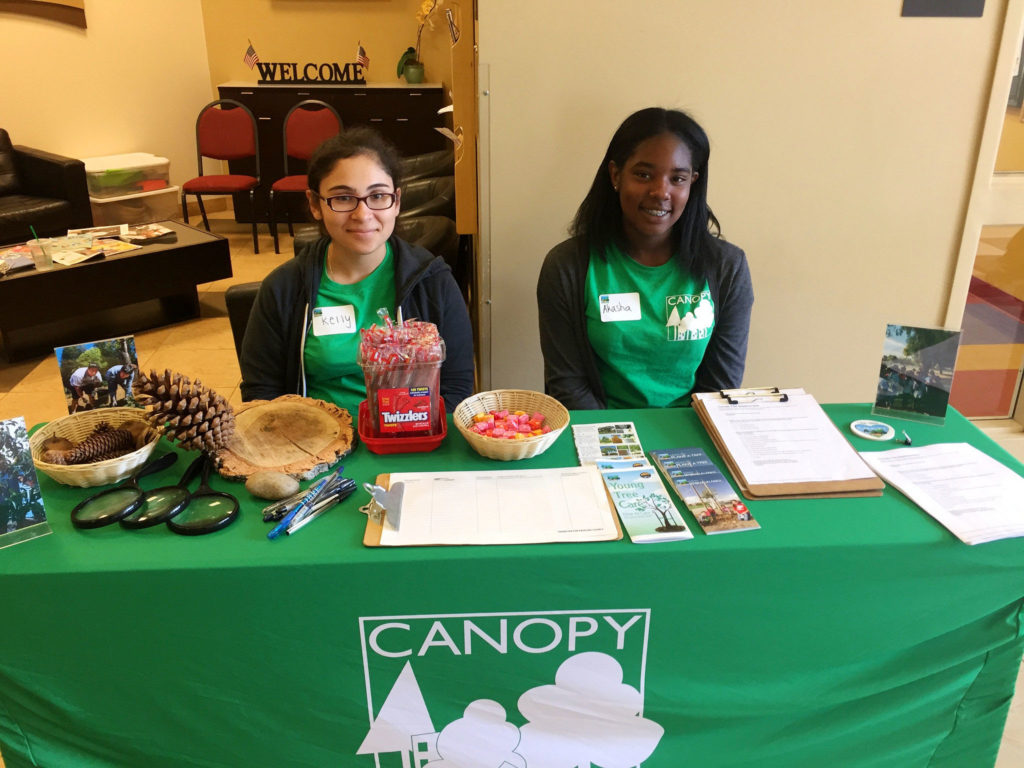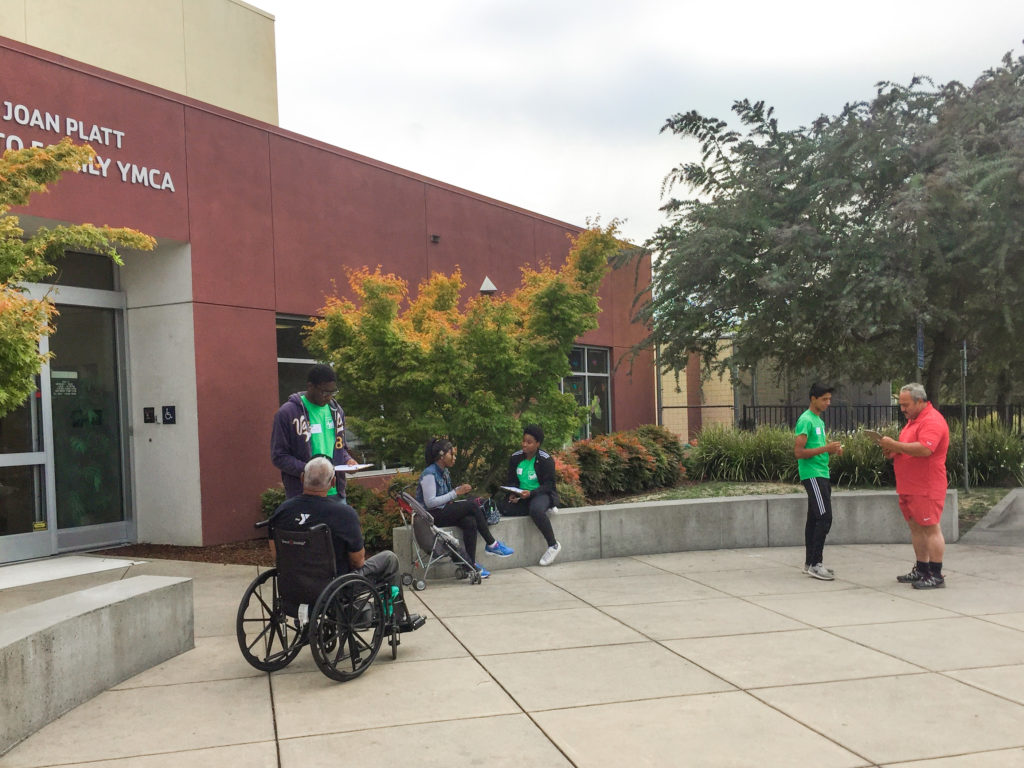- About Us
- Our Work
- Tree Info
- Get Involved
- Blog
- Support Us
By Canopy Team on August 11, 2017

This summer Canopy’s very own group of Teen Urban Foresters (TUFs) came up with an idea to survey East Palo Alto residents around the community. We decided to survey residents to see if they know about Canopy and what we’re trying to do for the community.
It was also important for us to find out how EPA residents feel about trees, to see if people want a tree for their yard, and what kind of tree it would be. Knowing that information would help out with Canopy’s goal to plant 500 trees by the year 2019. It’s called Branching Out, a program where Canopy is partnered with East Palo Alto residents to plant trees around parks, neighborhoods, and schools.
A way residents can help out Canopy would be volunteering their yard for a planting of a certain tree they want or are curious to have; plus the tree is free and all the resident needs is access to watering supplies to water the young tree every now and then.
We were lucky to have a special guest, Rachel Wright, who is Director of Research at Sacred Heart Community Service. She is one of the best to consult with about surveys and interviews, since part of her job is conducting surveys and interviews with people for Sacred Heart.
We learned from Rachel that we need to make sure that people’s time is not wasted, also to make a quick and effective survey that doesn’t take too long, but answers the essential questions.

A resident taking the survey
I also learned that having food is one of the most popular tactics you can use to attract people, because once it attracts the kids, then along come the parents. Another important tactic I learned from Rachel was to make the client feel more comfortable speaking to you, because once they feel comfortable, usually people go all out about how they really feel about trees or anything. Rachel was a huge help and we couldn’t have done it without her.
We developed the survey with 7 quick questions that would take less than 3 minutes, because we wanted to ensure a quick survey, but still make sure to ask the critical questions that Canopy would like to know from EPA residents. We even added a fun fact on the back for people who didn’t know much about trees.
The process we used was first practicing on friends and family, and seeing what issues we could resolve before we did the survey for real. I realized that a survey should flow with the questions we’re asking, also that we would like the people to think about their responses, but not too long that they would just agree with the statement or the popularity of others.
We decided to choose the YMCA as the place for the survey because we felt that it was the best place to get a mix of people and different thoughts about trees, and it is a commonly visited place in East Palo Alto. The format we had for the survey was that 3 TUFs would be outside to ask people to take the survey coming into the YMCA, another 3 TUFs would ask people who were leaving the YMCA, and there would be one TUF inputting the data into a Google form for the surveys we received.
Once people took the survey for us, we would thank them for their time and see if they checked yes for a tree planted in their yard, if they did we would direct them to a table to write down their information and receive a brochure about Canopy’s purpose and mission.

TUFs conducting the survey outside the YMCA in East Palo Alto
What I learned from the 50 people surveyed was that people know that East Palo Alto has too few trees (71.4% of respondents); even people that live in different cities know that. It was nice to see that people want trees planted in their yard (76.7%), but there were issues that got in the way for some, such as living in an apartment complex where the property doesn’t belong to them, or not having space for a tree to be planted.
Personally what I enjoyed was talking with people about their love of trees and how trees give us life.
We also learned that most people prefer shade from their tree over fruit from their tree, and half of the people we surveyed (50%) know of Canopy and what we’re trying to do. Personally what I enjoyed was talking with people about their love of trees and how trees give us life.
Learning about trees has been one of the coolest opportunities I’ve had this summer, and it was even cooler when I got to hear others talk about how trees are organisms that you can leave your print on for the future to accept.
—
 Harold Kirkendoll is a senior at Eastside College Prep. He enjoys spending time with friends and family by playing sports and talking with them.
Harold Kirkendoll is a senior at Eastside College Prep. He enjoys spending time with friends and family by playing sports and talking with them.
Harold became a Teen Urban Forester to learn more about trees and what they require to grow. Harold is interested in studying sports medicine and body movement in the future. His hobbies consist of reading political and sports articles.